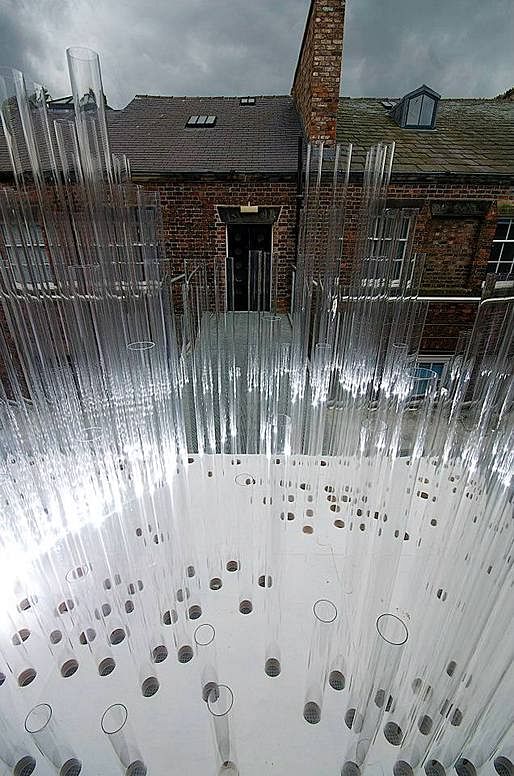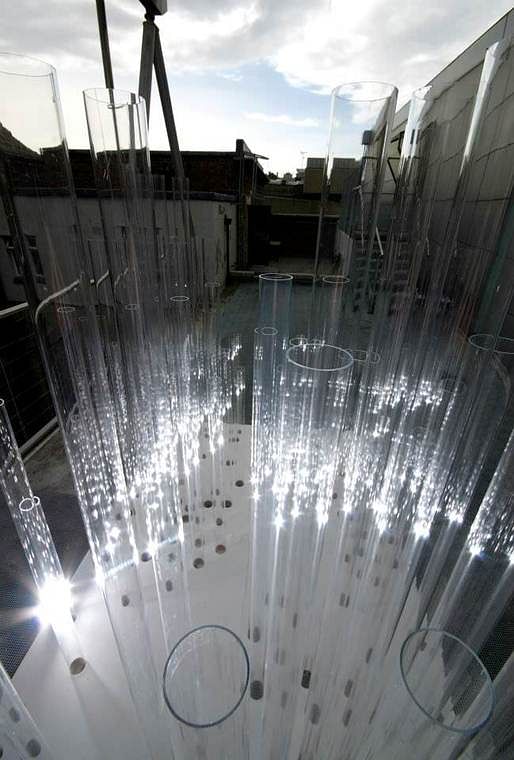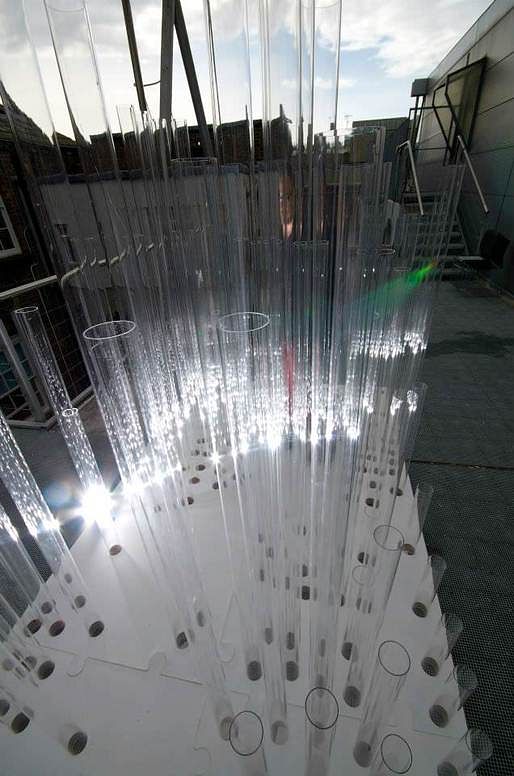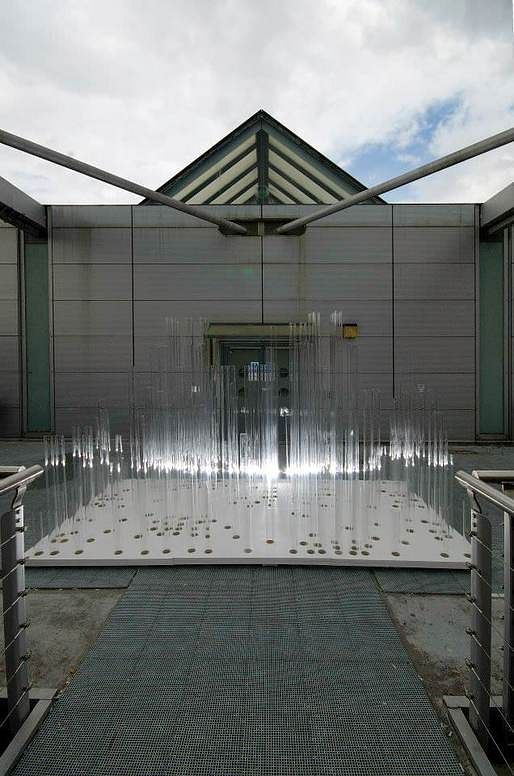
A team at the University of Liverpool developed a generative-performative script, which was used to design this installation, with the goal to predict lighting and deceptive blurring effects.

A description from the creators...
This installation reflects a collaborative, research led design project, aiming to explore the potentials offered by incorporating parametric / generative tools and performative lighting simulation software in architectural design and fabrication. It was designed in the research led, collaborative design studio framework of our Msc in Digital integrated Design program. During its intense 12 weeks schedule, student teams were asked to explore and apply generative / parametric tools such as Rhino and Grasshopper, in order to design and later construct a small pavilion, with a theme of their choice. In addition, each team was asked to optimize their design proposal by embedding environmental software plug-ins in their design process, thereby aiming to re-inform their parametric models and set performance targets. Finally each team was expected to propose a file to factory fabrication technique, following all constrains of a limited, predetermined budget. The most convincing and consistent proposal, was then chosen for fabrication. The finalized project serves as verification of the effectiveness of the design system and teaching methods used.


The Deceptive Landscape pavilion was conceived as an algorithmic patterning field, controlled by a set of point attractors, determined by paths of the users trajectories. To achieve that, a generative design tool was developed, able to associate the visitors movement path trajectories to variable degrees of the field's density. Its aim was to achieve different zones of light intensity, as well as the users visibility-visual deformation, hence deception. It is a Grasshopper script, based on the "c-cluster" grid and the "pt-PointAttractors" components. The visitors walking path trajectory, defined by the designer, acts as the main parameter of deformation allowing the grid to transform its density, its size, its height as well as the diameter of the units forming it. In that way, various iterations associated to different path scenarios could be explored. In order to materialize the field and achieve different degrees of light intensity, visibility and visual deformation, the team decided to use transparent, acrylic tubes. Through their cylindrical shape, radius, material property and arrangement (e.g. variable density and height), they appear to disrupt the visitors vision, visibility and perception while walking / standing in it and looking to the outside, or the other way round. In addition, the three-dimensional installation, could act as a visual filter, blurring or distorting people and objects in it or behind it. The accumulation of all lighting and visual effects was expected to produce visual and spatial deception.


Project Credits:
Supervisor and Project Manager: Asterios Agkathidis
Design Team: Zhang Yidan, Ye Zhou, Wu Xiaoyun
Fabrication and technical assistance: Stuart Carroll, Michael Baldwin, Stephen Bretland, Aleksandar Kokai

No Comments
Block this user
Are you sure you want to block this user and hide all related comments throughout the site?
Archinect
This is your first comment on Archinect. Your comment will be visible once approved.